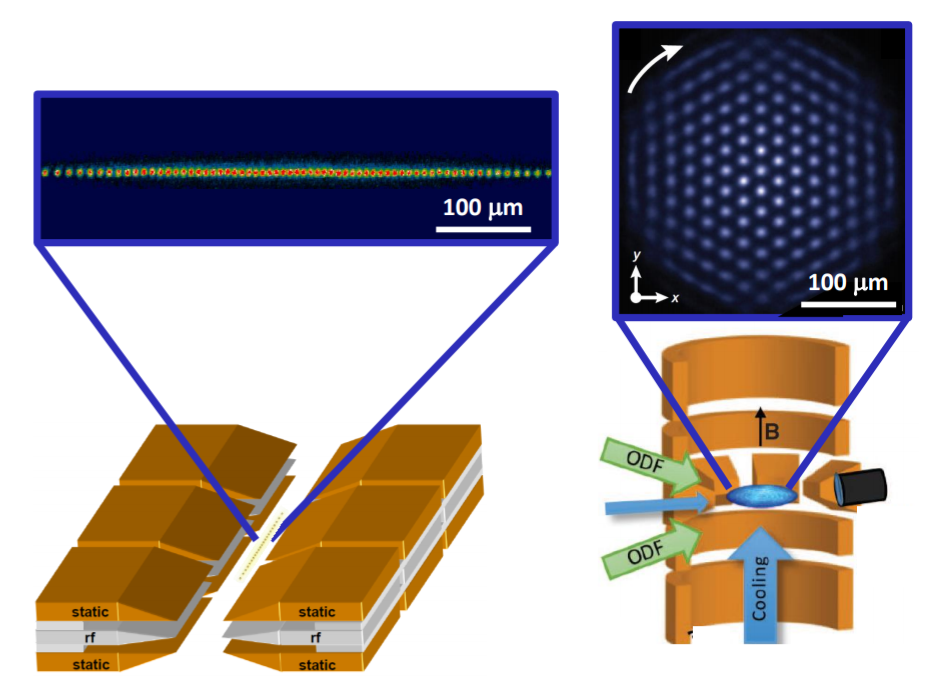2021
Programmable Quantum Simulations of Spin Systems with Trapped Ions
C. Monroe, W. C. Campbell, L. M. Duan, Z. X. Gong, A. V. Gorshkov, P. Hess, R. Islam, K. Kim, G. Pagano, P. Richerme, C. Senko, N. Y. Yao

This is a comprehensive review article on trapped-ion quantum simulation of spin systems, written jointly with colleagues from Univ. of Maryland, UCLA, Tsinghua Univ., Colorado School of Mines, Middlebury College, Rice Univ., Indiana Univ., Univ. of Waterloo, and UC Berkeley. The article should be accessible to a beginning graduate student. We give an overview of quantum simulation of non-trivial spin Hamiltonians generated by programmable interactions between trapped ion spins, adiabatic and dynamical evolution, ground state spin order and propagation of correlations in a many-body system. We cite examples from experiments performed over the last decade with two to fifty three ion spins.
Abstract: Laser-cooled and trapped atomic ions form an ideal standard for the simulation of interacting quantum spin models. Effective spins are represented by appropriate internal energy levels within each ion, and the spins can be measured with near-perfect efficiency using state-dependent fluorescence techniques. By applying optical fields that exert optical dipole forces on the ions, their Coulomb interaction can be modulated in ways that give rise to long-range and tunable spin-spin interactions that can be reconfigured by shaping the spectrum and pattern of the laser fields. Here we review the theoretical mapping of atomic ions to interacting spin systems, the experimental preparation of complex equilibrium states, and the study of dynamical processes of this many-body interacting quantum system. The use of such quantum simulators for studying spin models may inform our understanding of exotic quantum materials and shed light on interacting quantum systems that cannot be modeled with conventional computers.